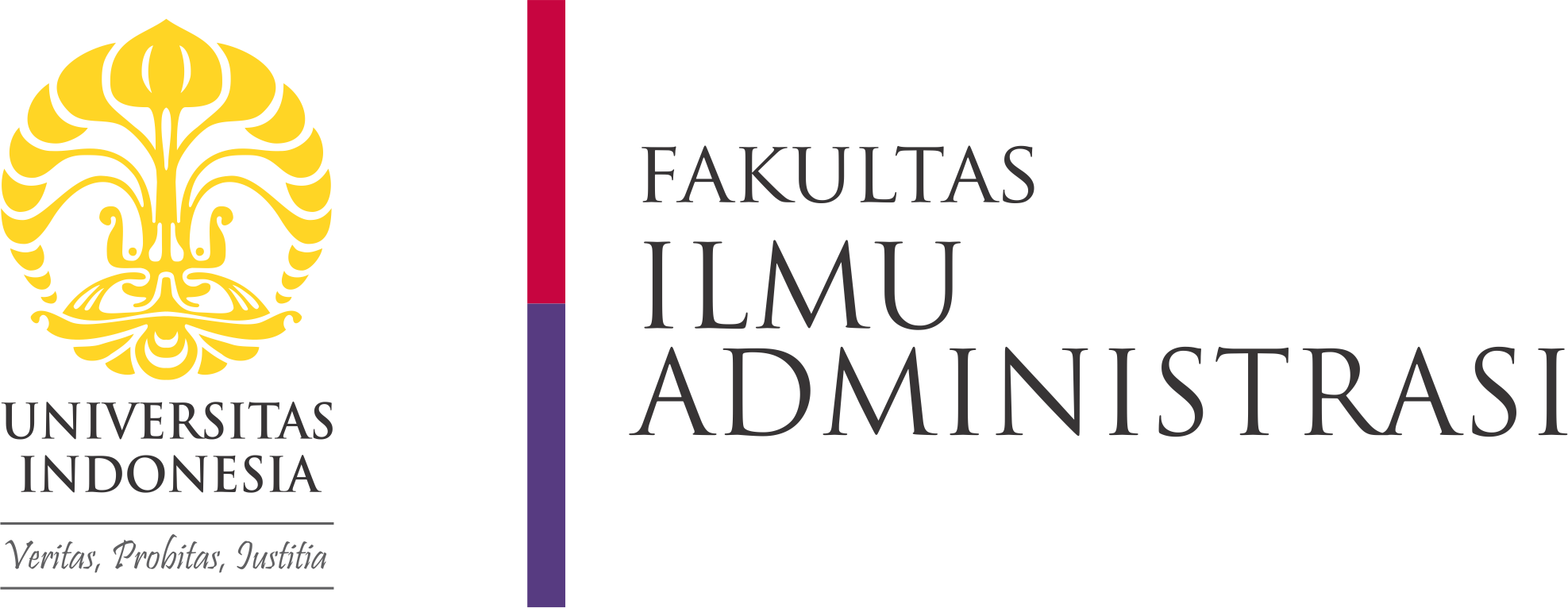Creative Commons License

This work is licensed under a Creative Commons Attribution-Share Alike 4.0 International License.
Abstract
This research delves into the multifaceted nature of publicness, offering insights into areas in the field of public administration. In times, the importance of publicness has grown significantly as it plays a role in shaping interactions among the public sector, private organizations, and civil society. Despite the available literature on publicness, there remain a few underexplored aspects that merit further investigation. This study reviewed the existing literature to identify and analyze gaps in research on publicness. By examining various perspectives, theoretical frameworks, and relevant aspects related to publicness, we discovered domains where scholarly discussions have notably lacked attention. The results of this study demonstrate that the concept of publicness encompasses a diverse range of theoretical perspectives, such as the management of publicness, public-private partnerships, governance, and the provision of public goods. Each element provides a distinct contribution to the comprehension of publicness in public administration. Moreover, this study highlights issues discussed in publicness, including public enterprises, public leadership, public facilities, public interest, public-private partnerships, governance, public goods, public space, public organizations, public value, and public service. These findings lead to a proposal for further research initiatives in publicness.
References
Acar, M., & Özgür, H. (2004). Training of civil servants in Turkey: Progress, problems, and prospects. International Journal of Public Administration, 27(3–4), 197–218. https://doi.org/10.1081/PAD-120028660
Ainscow, M. (2020). Promoting inclusion and equity in education: lessons from international experiences. Nordic Journal of Studies in Educational Policy, 6(1), 7–16. https://doi.org/10.1080/20020317.2020.1729587
Akka, Z. M. (2005). Questioning The Publicness of Public Spaces in Postindustrial Cities. Traditional Dwelling and Settlemnets Review, 16(11).
Anderson, S. (2012). Public, private, neither, both? Publicness theory and the analysis of healthcare organisations. Social Science and Medicine, 74(3), 313–322. https://doi.org/10.1016/j.socscimed.2011.07.021
Ankrah, S. N., & Al-Tabbaa, O. (2015). Universities-Industry Collaboration: A Systematic Review. SSRN Electronic Journal. https://doi.org/10.2139/ssrn.2596018
Antonsen, M., & Jørgensen, T. (2002). The ‘Publicness’ of Public Organizations. Public Administration, 75, 337–357. https://doi.org/10.1111/1467-9299.00064
Apriliyanti, I. D., & Alon, I. (2017). Bibliometric analysis of absorptive capacity. International Business Review, 26(5), 896–907. https://doi.org/10.1016/j.ibusrev.2017.02.007
Babajanian, B. (2015). Citizen empowerment in service delivery. In Governance in developing Asia: Public service delivery and empowerment (Vol. 229). Edward Elgar Publishing.
Benn, S. I., & G, G. F. (1983). The Public and The Private: Concepts and Action. Croom Helm.
Beshi, T. D., & Kaur, R. (2020). Public trust in local government: Explaining the role of good governance practices. Public Organization Review, 20, 337–350.
Biesta, G., Heugh, K., Cervinkova, H., Rasiński, L., Osborne, S., Forde, D., Wrench, A., Carter, J., Säfström, C. A., Soong, H., O’Keeffe, S., Paige, K., Rigney, L.-I., O’Toole, L., Hattam, R., Peters, M. A., & Tesar, M. (2022). Philosophy of education in a new key: Publicness, social justice, and education; a South-North conversation. Educational Philosophy and Theory, 54(8), 1216–1233. https://doi.org/10.1080/00131857.2021.1929172
Bifulco, L. (2011). Becoming public notes on governance and local welfare in Italy. Administration and Society, 43(3), 301–318. https://doi.org/10.1177/0095399711400044
Bozeman, B. (1987). All Organizations are Public: Bridging Public and Private Organizational Theories. Jossey-Bass Inc., Publishers.
Bozeman, B. (2007). Public values and public Interest. Georgetown University Press.
Bozeman, B., & Moulton, S. (2011). Integrative publicness: A framework for public management strategy and performance. Journal of Public Administration Research and Theory, 21(SUPPL. 3), i363–i380. https://doi.org/10.1093/jopart/mur031
Brinkerhoff, D. W., & Brinkerhoff, J. M. (2011). Public-private partnerships: Perspectives on purposes, publicness, and good governance. Public Administration and Development, 31(1), 2–14. https://doi.org/10.1002/pad.584
de Magalhães, C. (2010). Public space and the contracting-out of publicness: A framework for analysis. Journal of Urban Design, 15(4), 559–574. https://doi.org/10.1080/13574809.2010.502347
De Magalhães, C., & Trigo, S. F. (2016). Contracting out publicness : The private management of the urban public realm and its implications Progress in Planning Received in revised form 22 / 12 / 2015. Progress in Planning, 0–47.
Docherty, I., Stone, J., Curtis, C., Sørensen, C. H., Paulsson, A., Legacy, C., & Marsden, G. (2022). The case for ‘public’ transport in the age of automated mobility. Cities, 128. https://doi.org/10.1016/j.cities.2022.103784
Donaldson, M., & Kingsbury, B. (2013). The adoption of transparency policies in global governance institutions: Justifications, effects, and implications. Annual Review of Law and Social Science, 9, 119–147. https://doi.org/10.1146/annurev-lawsocsci-102811-173840
Feeney, M. K., & Welch, E. W. (2012). Realized Publicness at Public and Private Research Universities. Public Administration Review, 72(2), 272–284. https://doi.org/10.1111/j.1540-6210.2011.02521.x
Goldstein, S. M., & Naor, M. (2005). Linking publicness to operations management practices: A study of quality management practices in hospitals. Journal of Operations Management, 23(2 SPEC. ISS.), 209–228. https://doi.org/10.1016/j.jom.2004.07.007
Gul, H., Negiz, N., & Efe, S. (2019). City, Space and Publicness: Perceptions and Experiences in the Case of Isparta. IOP Conference Series: Materials Science and Engineering, 471(10). https://doi.org/10.1088/1757-899X/471/10/102036
Haque, M. S. (2001). The diminishing publicness of public service under the current mode of governance. Public Administration Review, 61(1), 65–82. https://doi.org/10.1111/0033-3352.00006
Jilke, S. (2013). What shapes citizens’ evaluations of their public officials’ accountability? Evidence from local Ethiopia. Public Administration and Development, 33(5), 389–403. https://doi.org/10.1002/pad.1659
Karaçor, E. K. (2016). Public vs. private: The evaluation of different space types in terms of publicness dimension. European Journal of Sustainable Development, 5(3), 51.
Kernaghan, K. (2003). Integrating Values into Public Service: The Values Statement as Centerpiece. Public Administration Review, 63(6), 711–719. https://doi.org/10.1111/1540-6210.00334
Kim, Y., & Kim, H.-J. (2022). Social value in public enterprises from the perspective of Creating Shared Value (CSV): The case of the Korea Expressway Corporation. International Review of Administrative Sciences, 88(4), 1211–1227. https://doi.org/10.1177/00208523211029765
Langstraat, F., & Van Melik, R. (2013). Challenging the ‘end of public space’: A comparative analysis of publicness in British and Dutch urban spaces. Journal of Urban Design, 18(3), 429–448.
Li, J., Dang, A., & Song, Y. (2022). Defining the ideal public space: A perspective from the publicness. Journal of Urban Management, 11(4), 479–487. https://doi.org/10.1016/j.jum.2022.08.005
Lodge, M. (2004). Accountability and transparency in regulation: critiques, doctrines and instruments. The Politics of Regulation: Institutions and Regulatory Reforms for the Age of Governance, 124–144.
Lutfiyya, Z. M., & Bartlett, N. A. (2020). Inclusive societies. In Oxford Research Encyclopedia of Education.
Margono, S., A., S., Krisnajaya, I. M., Subarsono, A., & Sunaryo., B. (2014). Fenomena Pengelolaan Publicness Melalui Organisasi Non-publik. GAVA MEDIA.
Merritt, C. C., Cordell, K., & Farnworth, M. D. (2018). Less is more? Publicness, management strategy, and organizational performance in mental health treatment facilities. Public Administration Quarterly, 42(1), 3–31.
Merritt, C. C., Farnworth, M. D., & Kienapple, M. R. (2018). Developing organizational leaders to manage publicness: A conceptual framework. Journal of Public Affairs Education, 24(2), 216–233. https://doi.org/10.1080/15236803.2018.1429816
Muluk, M. R. (2021). Systematic literature review on asymmetric decentralization. BISNIS & BIROKRASI: Jurnal Ilmu Administrasi Dan Organisasi, 28(2).
Nutt, P. C., & Backoff, R. W. (1993). Organizational publicness and its implications for strategic management. Journal of Public Administration Research and Theory, 3(2), 209–231. https://www.scopus.com/inward/record.uri?eid=2-s2.0-0000254331&partnerID=40&md5=5d9f752196bec5ddb4d15ed17bbbdb84
Olanrewaju, O. I., Enegbuma, W. I., Donn, M., & Chileshe, N. (2022). Building information modelling and green building certification systems: A systematic literature review and gap spotting. Sustainable Cities and Society, 81, 103865.
Paget-Seekins, L., & Tironi, M. (2016). The publicness of public transport: The changing nature of public transport in Latin American cities. Transport Policy, 49, 176–183. https://doi.org/10.1016/j.tranpol.2016.05.003
Parrado, S., Reynaers, A.-M., & Rama, J. (2022). The impact of publicness on the performance of professional services: Do private sector organizations perform better? Public Policy and Administration, 37(4), 431–456. https://doi.org/10.1177/0952076720977616
Pesch, U. (2005). The Predicaments of Publicness. Eburon Academics Publishers.
Pesch, U. (2008). The publicness of public administration. Administration and Society, 40(2), 170–193. https://doi.org/10.1177/0095399707312828
Petticrew, M., & Roberts, H. (2008). Systematic Reviews in the Social Sciences. In Systematic Reviews in the Social Sciences (Vol. 42, Issue 5).
Puro, N., Min, N., & Joseph Kelly, R. (2023). Publicness, Organizational Strategies, and Public Value Outcomes: An Empirical Analysis of U.S Acute Care Hospitals. Public Management Review, 00(00), 1–26. https://doi.org/10.1080/14719037.2023.2222140
Quayle, A. (2021). Whistleblowing and accounting for the public interest: a call for new directions. Accounting, Auditing and Accountability Journal, 34(7), 1555–1580. https://doi.org/10.1108/AAAJ-05-2020-4554
Raes, A., Detienne, L., Windey, I., & Depaepe, F. (2020). A systematic literature review on synchronous hybrid learning: gaps identified. Learning Environments Research, 23, 269–290.
Rothstein, B., & Uslaner, E. M. (2005). All for all: Equality, corruption, and social trust. World Politics, 58(1), 41–72.
Sajida, & Kusumasari, B. (2023a). Critical success factors of Public-Private Partnerships in the education sector. Public Administration and Policy: An Asia-Pacific Journal. https://doi.org/10.1108/PAP-11-2022-0127
Sajida, & Kusumasari, B. (2023b). Public private partnership implementation in education sector: a systematic literature review. International Journal of Management in Education, 17(5), 520–539.
Sajida, S. (2022). Mapping Trends of Literature in Energy Policy in Indonesia: A Bibliometric Analysis. Policy & Governance Review, 6(1), 17–39.
Splichal, S. (2018). Publicness–Privateness: The Liquefaction of “The Great Dichotomy.” Javnost, 25(1–2), 1–10. https://doi.org/10.1080/13183222.2018.1424004
Stirton, L., & Lodge, M. (2001). Transparency mechanisms: Building publicness into public services. Journal of Law and Society, 28(4), 471–489.
Strosberg, M. A., Gefenas, E., & Famenka, A. (2014). Research ethics review: Identifying public policy and program gaps. Journal of Empirical Research on Human Research Ethics, 9(2), 3–11.
Su, X. (2017). Dimensional Publicness and Serving the Vulnerable: Analyses of Specialized Substance Abuse Treatment Programs. American Review of Public Administration, 47(8), 898–913. https://doi.org/10.1177/0275074016643816
Tavares, G. M., Sobral, F., & Wright, B. E. (2021). Commitment to Public Values, Charismatic Leadership Attributions, and Employee Turnover in Street-Level Bureaucracies. Journal of Public Administration Research and Theory, 31(3), 542–560. https://doi.org/10.1093/jopart/muaa057
Vogel, R., & Masal, D. (2015). Public Leadership: A review of the literature and framework for future research. Public Management Review, 17(8), 1165–1189. https://doi.org/10.1080/14719037.2014.895031
Xi, Y., Ding, Y., Cheng, Y., Zhao, J., Zhou, M., & Qin, S. (2023). Evaluation of the Medical Resource Allocation: Evidence from China. Healthcare (Switzerland), 11(6). https://doi.org/10.3390/healthcare11060829
Yang, H., & Kyun, S. (2022). The current research trend of artificial intelligence in language learning: A systematic empirical literature review from an activity theory perspective. Australasian Journal of Educational Technology, 38(5), 180–210. https://doi.org/10.14742/ajet.7492
Yarnold, J., Banihashemi, S., Lemckert, C., & Golizadeh, H. (2021). Building and construction quality: systematic literature review, thematic and gap analysis. International Journal of Building Pathology and Adaptation.
Zalmanovitch, Y. (2014). Don’t reinvent the wheel: the search for an identity for public administration. International Review of Administrative Sciences, 80(4), 808–826. https://doi.org/10.1177/0020852314533456
Zapata, M. J., & Hall, C. M. (2012). Public-private collaboration in the tourism sector: Balancing legitimacy and effectiveness in local tourism partnerships. The Spanish case. Journal of Policy Research in Tourism, Leisure and Events, 4(1), 61–83. https://doi.org/10.1080/19407963.2011.634069
Zhiqiang, X., & Yi, T. (2020). Publicness: The Basis of Constructing a Public Administration Discipline in China. Social Sciences in China, 41(4), 105–125. https://doi.org/10.1080/02529203.2020.1844426
First Page
125
Last Page
135
Recommended Citation
khairul muluk, `mujibur rahman; Sajida, Sajida; Nisa, Gina De; and Durrety, Shinta Fatimah
(2023)
"Comprehending the Notion of Publicness: Unexplored Dimensions and Future Research Initiatives,"
BISNIS & BIROKRASI: Jurnal Ilmu Administrasi dan Organisasi: Vol. 30:
No.
3, Article 1.
DOI: 10.20476/jbb.v30i3.1476
Available at:
https://scholarhub.ui.ac.id/jbb/vol30/iss3/1






